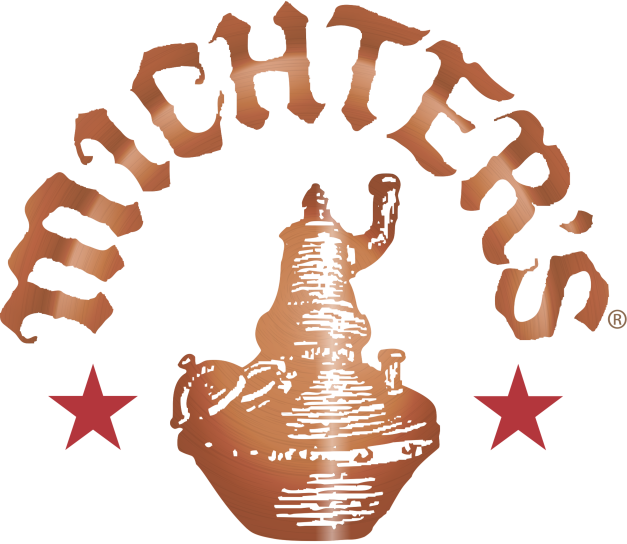We’ve got a lot to be proud of as America celebrates birthday number 239 (that’s right, Supreme Court and President Obama, I’m talking to you!). And what better way to show pride for our country than by drinking our native spirit — American whiskey. For as long as America has been a nation, whiskey has loomed large in its legend. George Washington distilled rye at his Mount Vernon estate. Ulysses Grant led the Union to victory in the Civil War while bombed on American hooch. Harry Truman negotiated with Congress over Kentucky bourbon. Frank Sinatra and the Rat Pack flew to the moon on gossamer wings jet-propelled by Jack Daniel’s. And so on and so forth.
You’ll find bourbons and ryes in this little compendium of my favorite newish homegrown booze, of course. But you’ll also find single malts (yep, they make ‘em here too!) and a barrel-aged cocktail. Whiskey for less than $40 and more than $150. Sweet, spicy, oaky, fruity… whiskeys as diverse as America itself. One thing you won’t find here, however, is Pappy Van Winkle. Because who needs to read any more about Pappy?
And just to set things straight — to be called bourbon, it’s got to be distilled from a mashbill of at least 51% corn, which makes for a sweeter whiskey, while rye has to be distilled from at least 51%… you got it, rye, which gives it spicier notes. Now let’s all lift a glass filled with something amber and American-made, and toast our great country! After you’re done reading, that is.
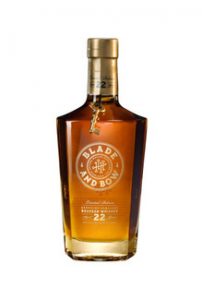
BLADE AND BOW 22 YEAR OLD LIMITED RELEASE KENTUCKY STRAIGHT BOURBON (46% ABV, aged 22 years, $175). Mentioning the name “Stitzel-Weller” to a bourbon fanatic is like saying “The Louvre” to an art lover. The famed Kentucky distillery closed in 1992, and remaining stocks are obviously few and far between at this point. Bourbon in Kentucky ages a lot faster than single malts in Scotland thanks to the weather, so odds are that anything distilled at Stitzel-Weller and still in the barrel is going to taste like you’re licking a piece of wood. Hence, this “homage” to Stitzel-Weller, featuring an old, rare bourbon which was aged at the Stitzel-Weller warehouse but not actually distilled there.
Yeah, I don’t get it either.
Another thing I don’t get is why there are two totally different bourbons under the Blade And Bow banner — this 22 Year Old expression and an unrelated solera-aged bourbon, containing whiskeys from 6 to more than 20 years old. They’re both good, but I prefer the 22 year old. It has a little more… gravitas, let’s say. A lot of wood, of course, but also rich fruity notes like apricot and plum, and spicy cinnamon notes as well. A very enjoyable bourbon, which I’d recommend with a caveat — I got my sample for free. At $175… well, it depends on how into bourbon you are, and how much disposable income you have.
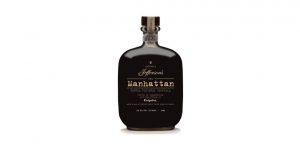
ESQUIRE & JEFFERSON’S MANHATTAN: BARREL FINISHED COCKTAIL (41.65% ABV, aged six years plus 90 days, $40). Much as I like Jefferson’s bourbons and much as I love Esquire mag, at first I didn’t really get the appeal of their bottled cocktail. The claim is that it’s barrel aged for 90 days, but I don’t get the rich, velvety chocolate notes I normally taste in an aged Manhattan. And while it’s a very good cocktail, it’s nothing I couldn’t whip up myself in a few minutes.
But… well, I have a tiny kitchen. And the other night my wife was whipping up dinner and there was no counter space for me to mix a drink. So I reached for my handy-dandy Esquire/Jefferson’s Manhattan, and… while it still doesn’t taste barrel aged to me, it’s oh so tasty, light on the vermouth so the zing of the bourbon comes through. It also employs cherry bitters, so if you don’t have a jar of cherries on hand — or if you don’t have access to the fridge, which was my predicament — you still get a hint of bright cherry without maraschino juice weighing down the drink. I actually enjoyed it more than a lot of Manhattans I’ve had whipped up for me by real live bartenders. Sure, you can probably make something close to this without too much hassle. But when you can’t, it comes in very handy indeed.

HUDSON DOUBLE CHARRED WHISKEY (46% ABV, aged less than 4 years, $44/375ml bottle). Tuthilltown Spirits in upstate New York has been churning out some pretty swell whiskies for a decade now — in fact it’s hard to believe that before they launched Hudson’s Baby Bourbon, distilling in NY State was practically a lost art. Now, of course, you can’t throw a rock in the Finger Lakes region without hitting a pot still. But Hudson’s whiskeys are still among the best in the state. And that includes this limited edition bourbon/rye combo, which will probably never be replicated for the simple reason that it was created by accident — one they don’t want to repeat.
In 2012, there was a fire at the distillery that engulfed the barrels but fortunately didn’t light the booze aging inside. The result was double-charred barrels, on the outside as well as the inside. About 1,000 gallons of bourbon and rye were left to age for exactly two more years in the damaged barrels, just to see what would happen. The result was a whiskey that’s quite spicy and, fittingly, a little smoky, owing to both the char and their relatively young age. But there’s also a fair amount of vanilla and, interestingly, strong black tea. It’s not quite like any whiskey I’ve tasted before — and I mean that in a good way. Sadly, there are only 2,700 or so bottles available, but who knows? Maybe next time they can double-char the barrels on purpose.
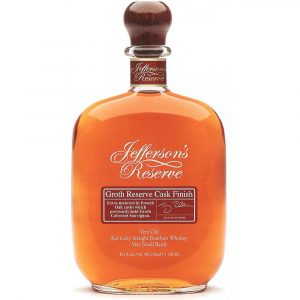
JEFFERSON’S RESERVE GROTH CASK FINISH BOURBON (45.1% ABV, aged 6 years plus 9 months, $80). Can’t decide between bourbon and wine? Then try this bourbon that’s been finished in French Oak barrels that previously held Cabernet Sauvignon wine from Napa’s esteemed Groth Vineyards (I think they should have called it Revenge Of The Groth. Maybe next time they should consult me.)
This is, to cut to the chase, a beautiful bourbon. The wine has a big influence on the flavor, imparting luscious fruity flavors (green grapes, apple, a bit of cherry) and heightening the vanilla notes. Rich caramel, chocolate and a bit of rye spice balance out the sweetness. It’s ridiculously easy to drink neat; no ice or water needed here. I hear it’s a limited edition but I damn sure hope it isn’t — my inner hoarder is already starting to panic a bit. It’s a great whiskey to serve at a July 4th picnic with some good ol’ American fried chicken.
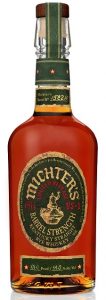
MICHTER’S US*1 BARREL STRENGTH RYE WHISKEY (54-56.5% ABV, no age statement, $75). Michter’s standard US*1 Rye is good enough to not need any serious tampering, so all the Barrel Strength does is leave out the water that’s normally added once it’s out of the barrel, which makes it smoother and easier to drink. Water is added after the fact for the vast majority of whiskeys. But if you’re a whiskey nut, you don’t want to buy water. You want it just the way it came out of the barrel, the way Mother Nature intended it. And if anyone’s gonna add water, it’ll be you. That do-it-yourself spirit is what made America great, after all.
In this whiskey nut’s opinion, the 108-113 proof (depending on the barrel) version really does trump the good ol’ 42.4% standard US*1 Rye. It’s just on the right side of the hot/too hot divide, as well as that of spicy/too spicy. An elegant oaky dryness and rich toffee notes keep it from riding off the rails; a little ice brings out more caramel and a bit of appley goodness as well. But you don’t need to add ice or water to this baby. A glass is all you need to enjoy it.
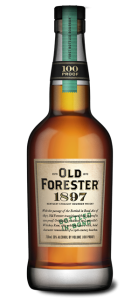
OLD FORESTER 1897 BOTTLED IN BOND BOURBON (50% ABV, aged at least 4 years, $50). Old Forester has been around for damn near 150 years now, and they’re showing off their heritage with a series of bourbons designed to replicate production methods from various points in the brand’s history. 1897, the second release, commemorates the Bottled In Bond Act which was enacted that year. It was meant to put a check on those nefarious folk who tried to pass off colored firewater as honest-to-goodness aged bourbon. Bottled In Bond meant, and still means, that the bottle contains all whiskeys distilled in the same season, aged for at least four years, bottled at exactly 100 proof, and basically kept under lock and key by agents of the federal gov’ment itself until bottling. By today’s standards, not exactly sophisticated stuff, but back then it was a trademark of quality.
As a young 100 proof whiskey, 1897 on the hot side, somewhat drier than most modern-style bourbons, with less vanilla and more burnt caramel notes. I can imagine a mustachioed, derby-wearing gent strolling into a saloon around the turn of the 20th century and downing a glass of this. Do I prefer it over my favorite bourbons? No. Do I think it’s really cool from a historical standpoint? Absolutely. And is it a great way for an American history buff to toast the 4th? Damn straight.
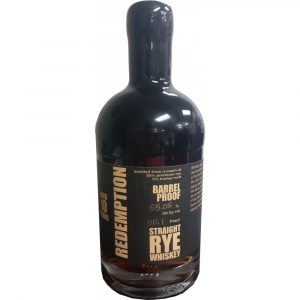
REDEMPTION 10 YEAR OLD BARREL PROOF RYE (55.05% ABV, aged 10 years, $180). Redemption’s whiskeys are proof that there should be no shame in the game of brands that source their whiskeys (in this case from the colossal MGP distillery in Indiana) rather than make their own. The fact is, MGP makes some damn good whiskey, and as long as you’re honest about where it comes from, what’s the problem? Dave Schmier of Redemption finds the cream of MGP’s aged rye, buys it and bottles it, with minimal blending — this decade-old rye comes from a mere six barrels. And it’s killer stuff, too, starting off sweet, almost fruity, before whacking you upside the taste buds with a big hit of rye spice, oak and just a touch of caramel. I was prepared for a blast of 110-proof heat on the finish, but it was actually quite mellow. I prefer the slightly sweeter 7 Year Old bottling (good luck finding it; like the 10 year old, it’s a limited edition), but damn, this is good.
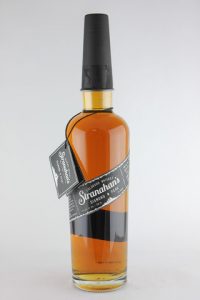
STRANAHAN’S DIAMOND PEAK COLORADO WHISKEY (47% ABV, aged 4 years, $70). It’s so weird to think that a 4-year-old single malt from Colorado is selling for more than a lot of single malts from Scotland that have been aged three times as long, but that’s how red-hot American whiskey is right now. In case you’re wondering what the heck a single malt is, it’s a whiskey made from barley that’s been cooked, or malted, at a single distillery. 100% barley whiskey has traditionally been the domain of “furriners” (Scotch, Irish, Japanese), but in recent years some intrepid American distillers have tested the waters as well, with varying degrees of success.
Stranahan’s is one of the most highly regarded American single malts, so expectations for Diamond Peak have been high. And in this case, they delivered. It’s quite oaky, but without the alcoholic heat that can plague a lot of younger whiskeys — my tongue still doesn’t believe this is only four years old. (Seriously, tongue, it is!) It’s redolent of honey and toffee, with cereal notes of granola and spicy cinnamon, and surprisingly mild on the finish. I can’t compare this to any Scotch whisky, even though Diamond Peak is distilled from the same grain; it’s a wholly unique animal. The price could stand to be a little lower, but it’s worth trying all the same.

WESTLAND AMERICAN SINGLE MALT WHISKEY (46% ABV, no age statement, $80). American malt whiskey is still in its Wild West period, where there ain’t no rules, anything goes, and only one thing is for sure — this stuff doesn’t taste like its Scottish sibling. American malt whiskey distillers don’t have the luxury of using centuries-old distilleries, with barrels of juice that have been aging for decades. But one thing they do have is moxie, and plenty of it. Does moxie translate into good booze? Yes and no. I’ve had some good ‘Murican malts, but I don’t think I’ve had any great ones, and the gushing praise for Corsair’s award-winning Triple Smoke expression left me confused more than convinced.
So the thing to do with American malt whiskeys is to go in with the proper expectations. You’re not going to get 18-year-old Macallan, but you might get something pretty damn yum, such as this 2-year-old toddler of a dram from Seattle. It uses locally grown barley and it’s aged in new American oak barrels (as opposed to ex-bourbon barrels, which is what the Scots do). It’s ripe and fruity, with pear and dark chocolate and peppery notes predominant, and it goes down a little hot, but not as hot as you might expect from booze this young. In short, it’s got potential. And while I’m not sure I’d plunk down $70 for it unless I was in a highly charitable mood, this is a brand to watch. And I’m looking forward to checking out their sherry cask-aged and peated expressions, too.
